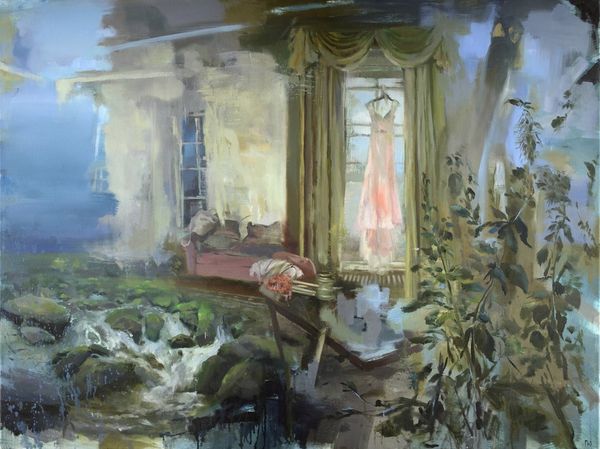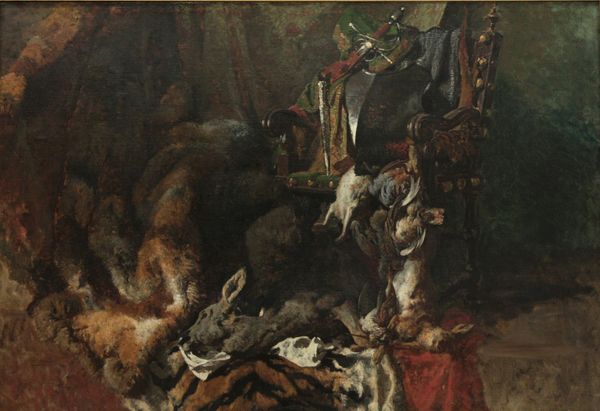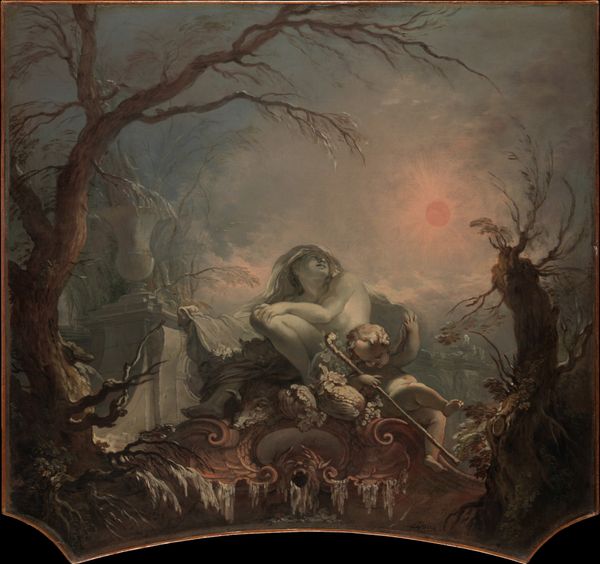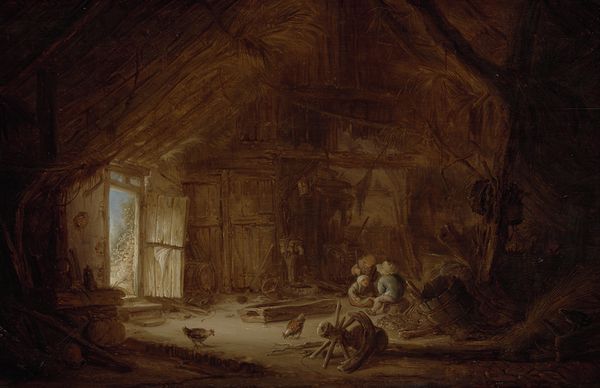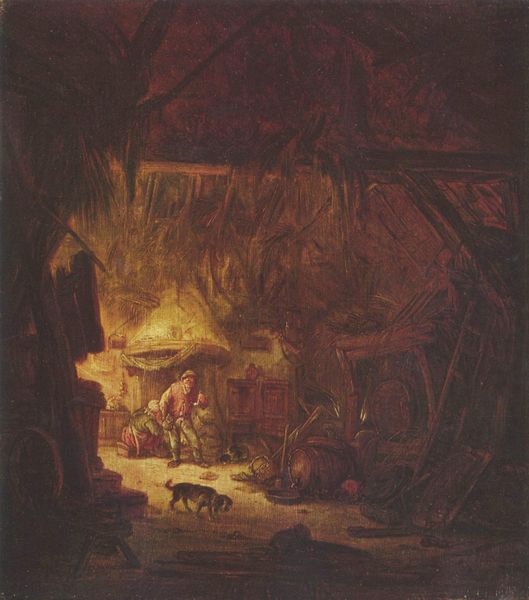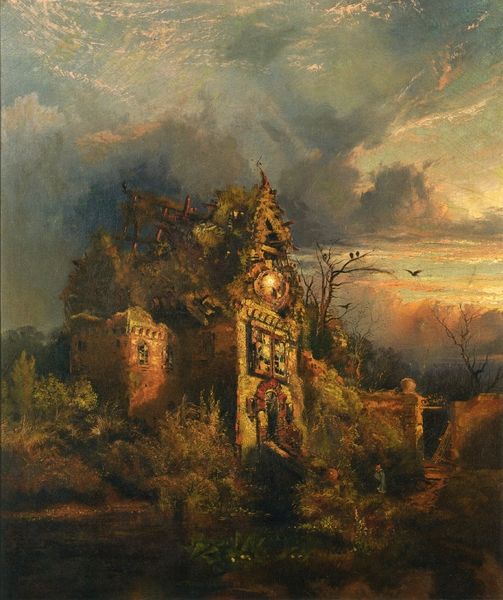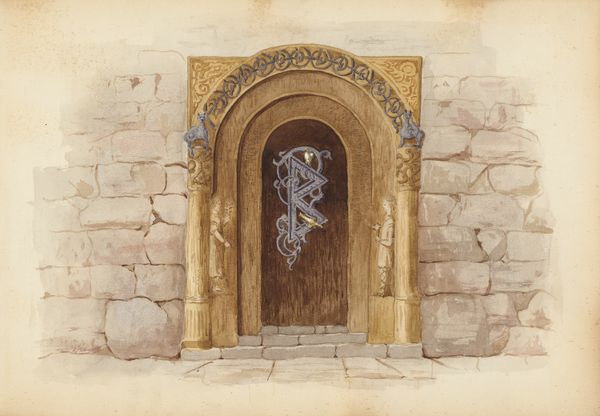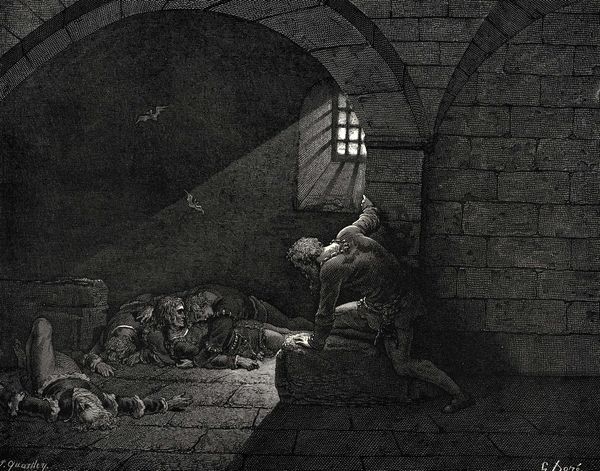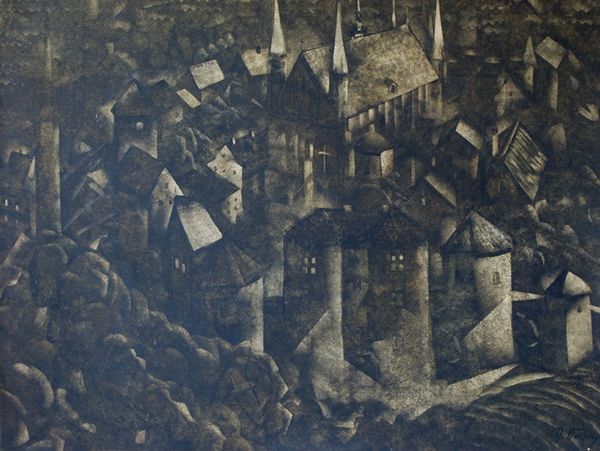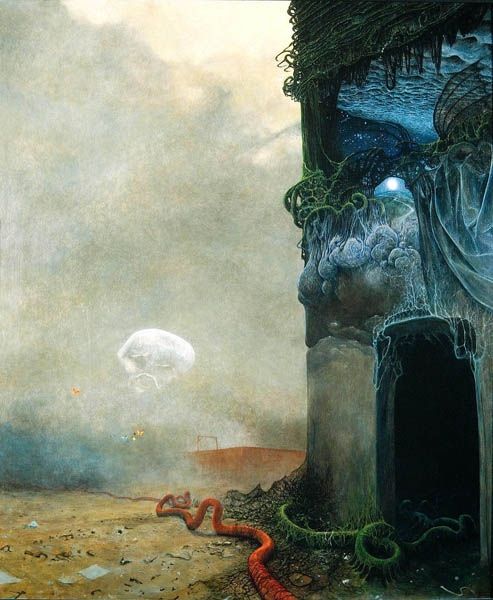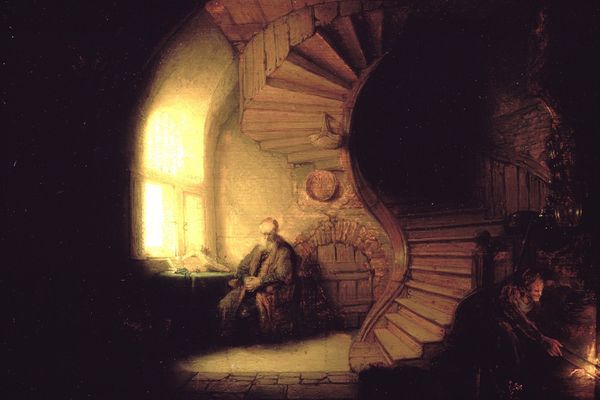
painting, oil-paint
#
painting
#
oil-paint
#
landscape
#
genre-painting
#
mixed media
#
realism
Dimensions: height 50.5 cm, width 41.0 cm, depth 10.6 cm
Copyright: Rijks Museum: Open Domain
Curator: Welcome. We’re standing before August Allebé’s 1867 oil painting, “Well-guarded Infant," found here at the Rijksmuseum. What's your initial take on it? Editor: Claustrophobic. All those dark browns and grays really press in. The high horizon line amplifies it, emphasizing the enclosure. It feels like peering into someone's intimate, everyday space, albeit a rather shadowy one. Curator: The tonal range is quite limited, isn’t it? The artist uses a tight palette to emphasize the play of light—note the single light source illuminating the infant's bed from above. That directed light contrasts with the murky foreground. Editor: Speaking of that foreground, look at the materiality on display. You've got everything—wood, straw, feathers. It’s an entire farm's worth of textures crammed in. Notice how Allebé painstakingly details the wear and tear on the wooden structures. Curator: Indeed, and consider the structural dynamic between the animal inhabitants and the infant in its cradle, suggesting a harmonious coexistence within this rural scene. It almost creates a moral allegory. The compositional balance achieved between the animal figures and the vulnerable child prompts introspection on themes of shared space and reliance. Editor: Interesting you bring that up, and to extend that note on co-existence, notice also how rough the textures seem—splintered wood, coarse hay, a palpable grittiness. Allebé doesn't seem to shy away from showing the harshness of agrarian life. Even the lighting has an almost utilitarian, unromantic feel. Curator: Yet, it transcends pure representation. The limited palette functions more as a conscious filter, subtly heightening the melancholic atmosphere. It invites contemplation, less about raw materiality, and more about mortality. Editor: I find the emphasis on the raw, unprocessed elements, more captivating than melancholy. The piece reveals the tangible efforts that enable everyday living. Curator: It’s precisely in that tension—between Allebé’s formal choices and the subject matter—that we locate the painting's richness, I would say. Editor: Agreed. It's certainly provided us with food for thought, revealing how everyday realities are shaped through artistry.
Comments
No comments
Be the first to comment and join the conversation on the ultimate creative platform.
